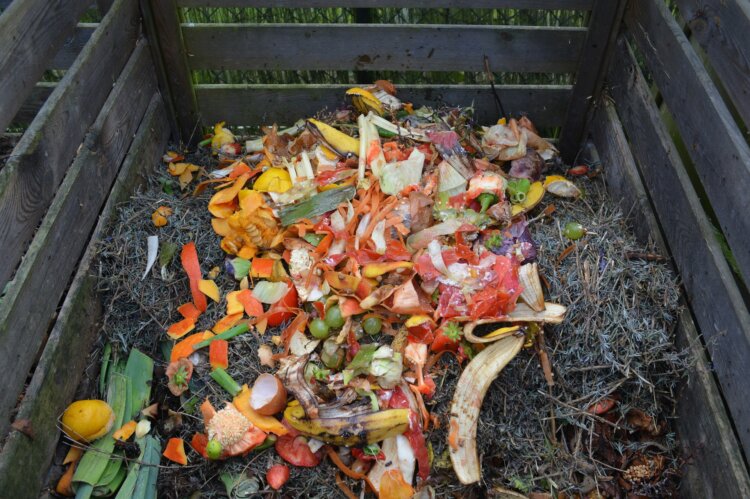
Composting may seem like something reserved for farmers in Kansas or hippies in Woodstock, but it’s actually a fairly easy practice that any eco-conscious person can adopt.
You might ask, “Why should I compost?” Food trash makes up a large share of our garbage. In New York City alone, it’s estimated that 21 percent of trash is food waste—and with the city producing 12,000 tons of trash a day, that’s more than 2,500 tons a day. But when that food waste is removed from regular garbage it frees up space in landfills and diverts the methane gas that the materials usually create there. Plus, once used as organic material in compost, food waste adds nutrients back into the soil. It’s a win-win for the environment.
So if you’ve avoided composting because you don’t have a garden or think it’s too much of a hassle—but you do want to be a little better to Mother Earth—well, you’ve come to the right place.
How do I collect compost?
No matter where you live, collecting the food waste is fairly simple. You can purchase a tabletop compost bin, which helps reduce the smell, or simply reuse a food container (my mom has used the same leftover gallon ice cream tub for years). If you use a Tupperware-type container, as long as it seals, you’ll likely only notice the smell if there’s been food simmering in there for a while or when you open the lid to add more. If either container starts to fill up and you can’t take it outside or to a drop-off just yet, put it in the freezer.
What can I compost?
Any raw fruits or vegetables can be added to your bin as well as egg and nut shells. You can add produce that’s been cooked, but only if you steamed it or cooked it without any dairy, fats, greases or oils—which are a compost no-no. Dry food scraps such as leftover rice or cereal are okay as long as they’re not mixed with those no-nos as well. You can also include teabags and coffee grounds—with the filter—as well as paper towels (as long as you didn’t sop up … you guessed it: dairy, fats, greases or oils).
Outside the kitchen, you can also toss in newspaper, cardboard or paper bags as well as house plants or cut flowers. You can even add in yard and grass clippings, fireplace ash from natural wood, dryer lint, hair and fur—but we don’t suggest keeping those on the kitchen counter. That’s a little too hippie-dippie, even for us!
What do I do with my compost?
If you are in a large city, there are many community-based drop-off locations; you simply dump in their bins and start collecting again. In both suburbs and more rural areas, there are farmers who accept compost or organizations that do bike pickups. Do a Google search for your area to see your options. And be sure to find out if they have any restrictions in addition to the guidelines above.
What if I want to handle the compost on my own?
Good for you! If you have a backyard with a small, shady area—you can start the decomposition process all on your own. You can use a large container, or a plastic turner made specifically for composting, or just start a pile straight on the ground. Add a mixture of both brown materials (like dead leaves, branches, and twigs) and greens (grass clippings, coffee grounds, fruit and veggie waste, etc.). Be sure to break up any large pieces; for example, you’ll need to shred newspapers and rip up paper towels. Large produce such as broccoli stalks will take longer to break down, so you can chop those up or just plan to keep those in longer. Whenever you add dry materials, be sure to keep them moist. Cover the entire pile with a tarp, and mix every few days.
Once your compost pile is initially set up, you should try to bury new materials at least 10 inches below the top layer. After two months to two years (depending on your climate, how often you tend to it, the size of your pile, etc.), you can begin using the compost to till into your garden. You’ll know it’s ready when it starts to look and smell like dark soil.
What if I want to do my compost inside?
Well, you can, but we wouldn’t suggest it unless you have a large mudroom or garage. Purchase a large, specialty bin at a hardware store (or you can make your own) and follow instructions above, except you’ll add dirt as well. You’ll want to tend to it very regularly and make sure you’re not adding any of the no-no items or else it could attract rodents and pests, which could happen outside as well, but it’s more concerning when you’re doing it inside.
What if I want to take my composting to the next level?
There are many things you can do to speed up and improve the decomposing process, such as temperature probes, worms, and more. Just make sure you do your research: Mike McGrath, of NPR’s You Bet Your Garden has answered a lot of questions on the matter—which you can find on his website.
Do you compost? Are you in the city or a suburb? Have any good composting tips? Let us know below!
[interaction id=”5b1166ca69550a61d23fe4aa”]


Grok Nation Comment Policy
We welcome thoughtful, grokky comments—keep your negativity and spam to yourself. Please read our Comment Policy before commenting.